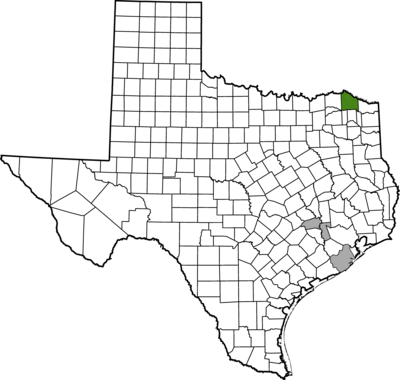
Red River County
Charting Routes and Connections
The Domestic Slave Trade Into & Within Red River County, 1836-1865
Historians estimate that between 1790-1860 over one million enslaved people were trafficked from the Upper South to the Deep South and Southwest through the domestic slave trade.1
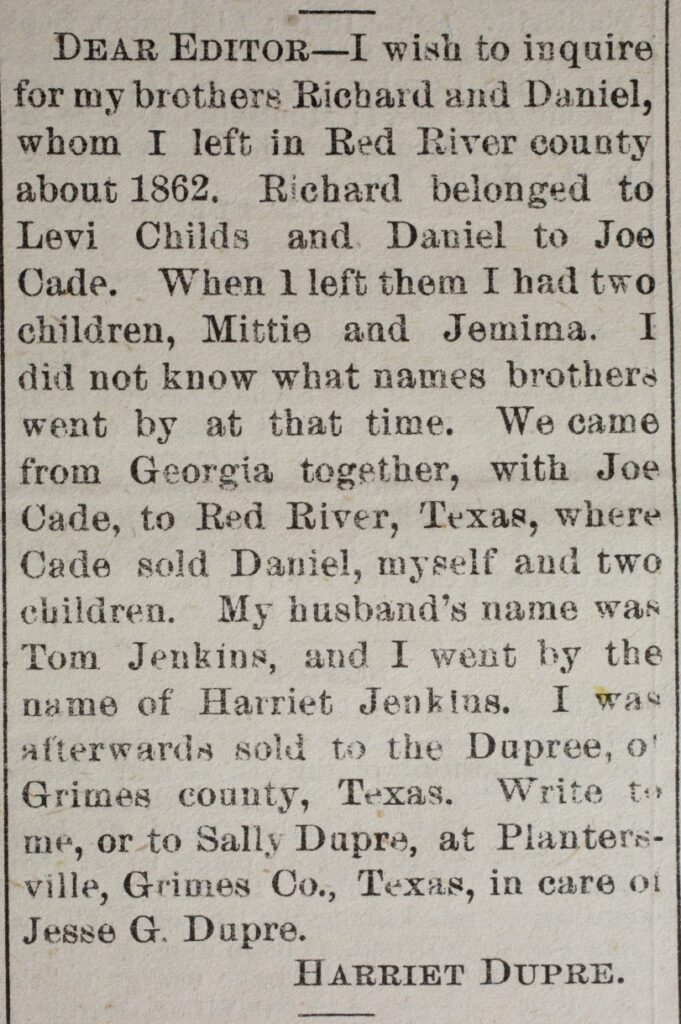
During the Civil War (1861-1865), in the attempt to prevent their enslaved property from seeking freedom behind U.S. Army lines, enslavers refugeed their slaves into Texas from other parts of the Confederacy. It is likely that Harriet Dupre and her family were among the thousands of enslaved people brought into Texas in this manner.
Fifteen years after emancipation, Harriet Dupre placed an ad in the Southwestern Christian Advocate searching for her brothers, Richard and Daniel.
Her ad details multiple family separations. First, forcibly relocated from Georgia to Red River County, and then again, when she and her children were sold to the Duprees in Grimes County, Texas.
Her family history demonstrates both the domestic slave trade into and within Texas.
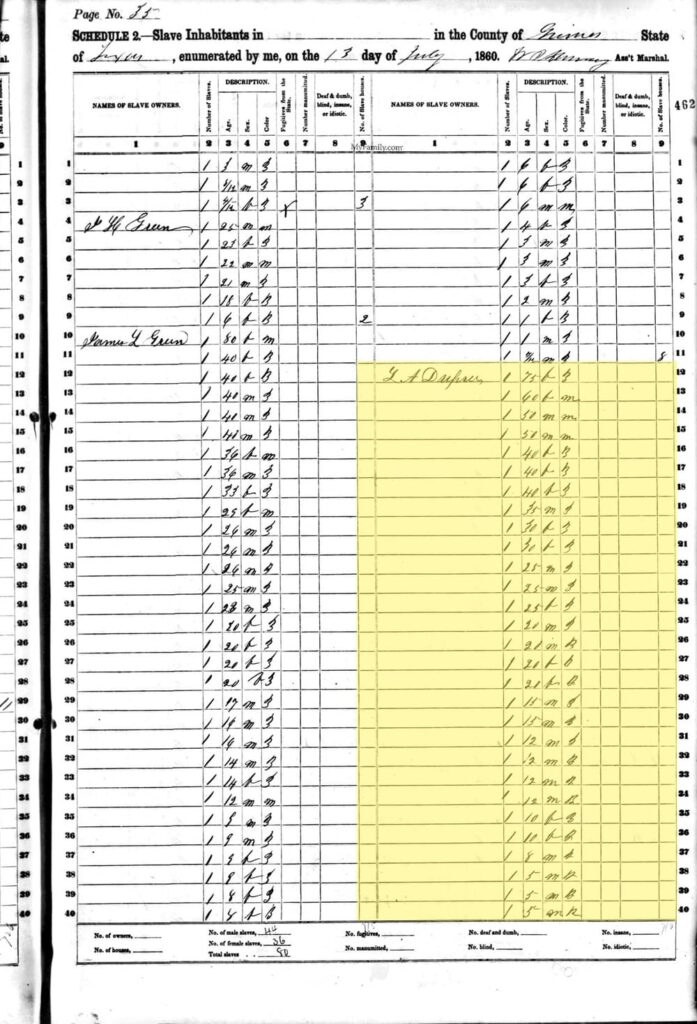
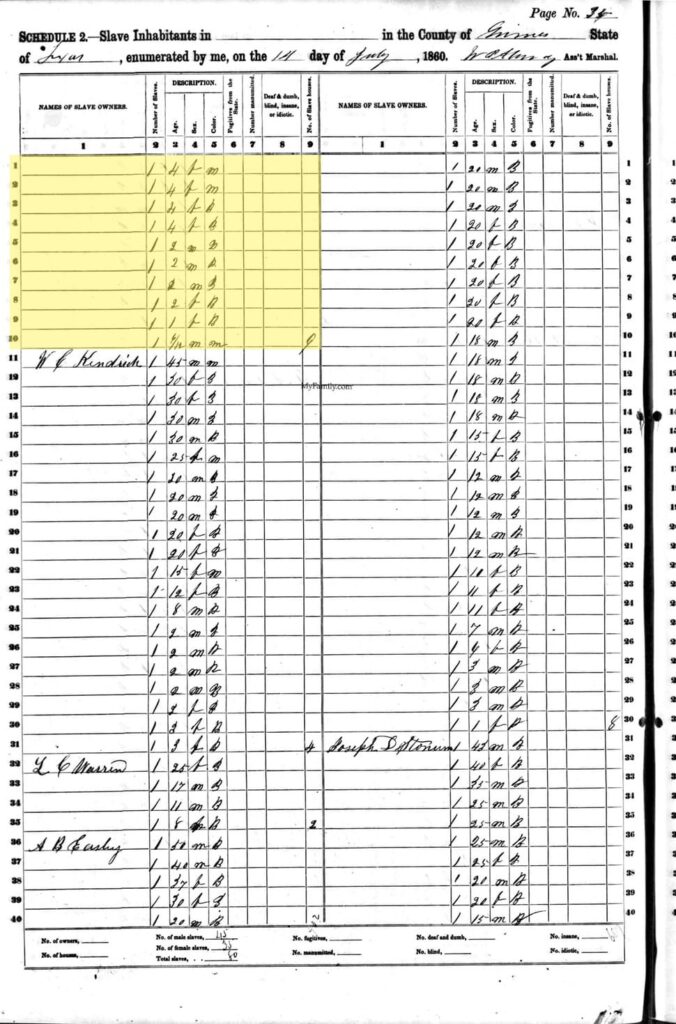
Documenting the Slave Trade in Their Own Words
Starting in 1877, the Southwestern Christian Advocate, a newspaper published in New Orleans, began running messages placed by formerly enslaved individuals seeking their family and loved ones from whom they had been separated during enslavement.
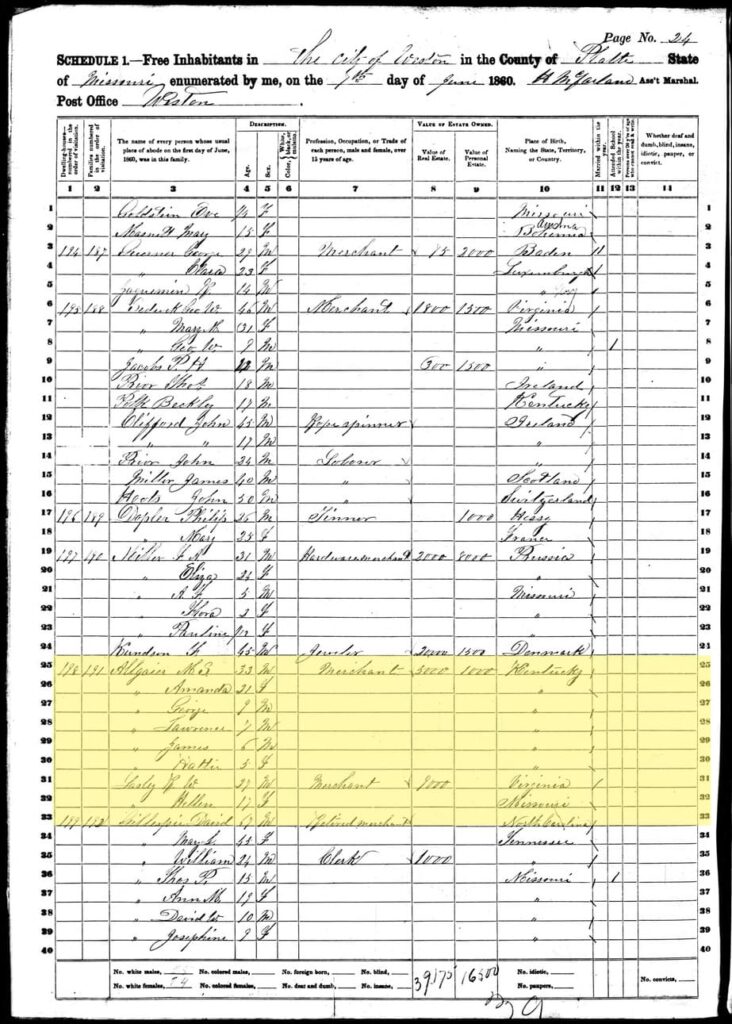
The Southwestern Christian Advocate was published weekly from 1877 to 1929 for the Methodist Episcopal Church. The newspaper’s circulation included a network of 500 Methodist ministers, 800 post offices, and over 4,000 yearly subscribers located throughout Louisiana, Texas, Arkansas, Mississippi, and Tennessee. Subscribers to the newspaper could place ads free of charge. In 1880, a yearly subscription cost $2.00.
Initially, the ads were to be read aloud to parishioners in Black churches in the hopes of spreading information by word-of-mouth.
Mike Allgaire[s], identified in the 1860 census for Platt County, Missouri as a “merchant,” was most likely a slave trader. He brought Mary Goodrich’s sister, Arabella, to Clarksville, Texas during the Civil War.
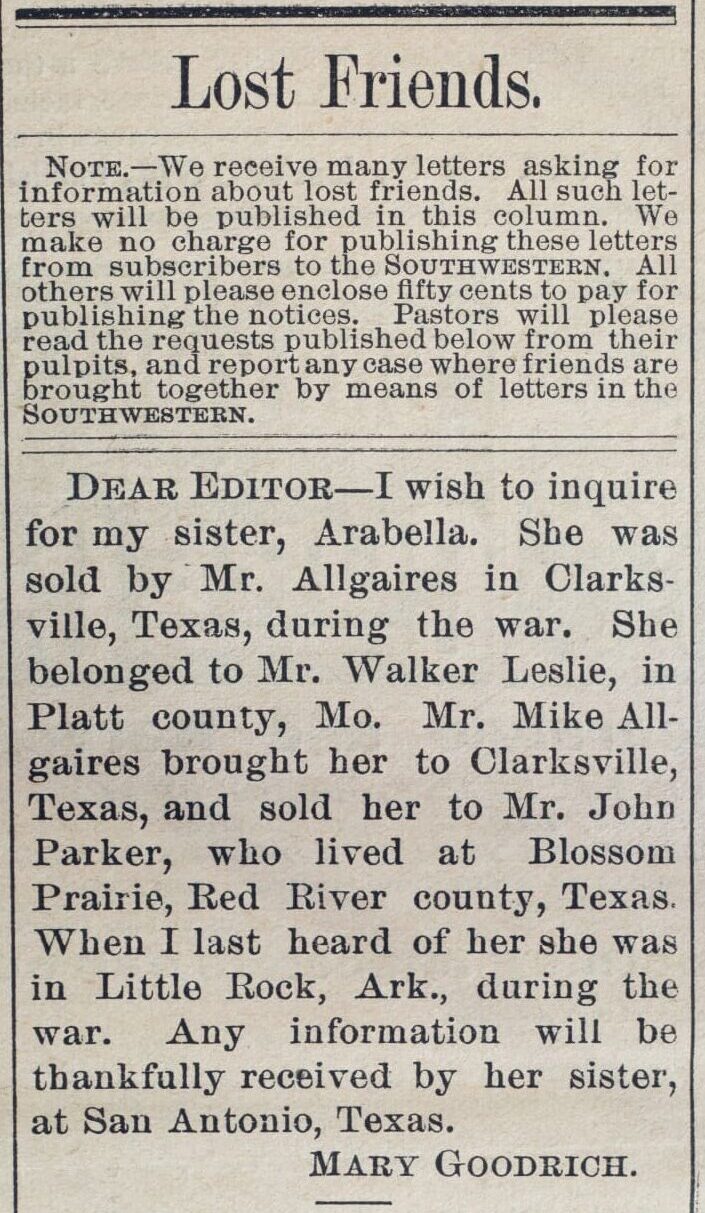
There he sold her to John Parker who, according to Mary Goodrich, lived in Blossom Prairie, Red River County.
Blossom Prairie, now known simply as Blossom, lies just west of Red River County, in Lamar County, approximately twenty miles from Clarksville.
Arabella’s movement into and through Red River County mirrors that of countless other enslaved people.
Because of its location along the Red River and borders with both Arkansas and Louisiana, Confederate men and women fleeing the U.S. Army sought refuge for themselves and protection of their enslaved property in Texas. One historian estimates that the enslaved population in Red River County increased by over 1,300 people during the Civil War. According to the 1860 U.S. Census Slave Schedule, there were 3,039 enslaved people in Red River. By 1864, by at least one account, there were over 4,600.
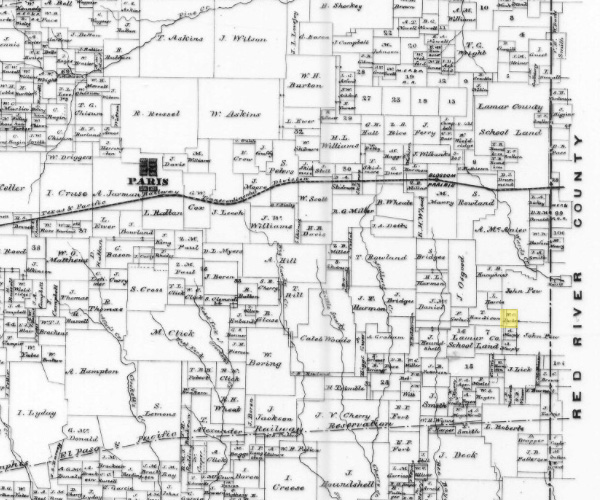
Footnotes
1 Steven Deyle, Carry Me Back: The Domestic Slave Trade in American Life (New York: Oxford University Press, 2005).
